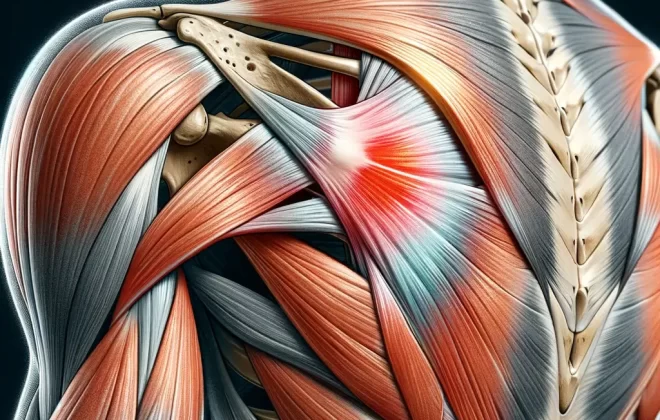How To Sleep with SI Joint Pain
The pain and discomfort from the Sacroiliac joint (or SI joint pain) will, without a doubt, keep you up most nights. Since good sleep is essential for your health and overall wellness, learning or relearning sleeping positions will relieve the pain and pressure and make for a good night’s sleep.
In this article, you’ll learn about some of the best ways for you to overcome the current challenge from the pain. Remember that while learning how to sleep with SI joint pain is challenging, it is not impossible – especially if you are already on the treatment program recommended by your health care provider.
Before sharing tips on how to sleep with SI joint pain, let’s first look at the basics of this condition.
What Is SI Joint Pain?
SI joint pain, also called sacroiliac joint pain, is the pain in your lower back or the butt region that and could be the result from the inflammation or damage of either one or both of your sacroiliac joints. Pain in this area may also just simply be referred from the lumbar spine.
As mentioned above, this joint is at the pelvis, and the lower spine connects – as a result, the pain can spread to either one or both legs. The pain is also referred to as SI joint syndrome, SI joint inflammation, SI joint dysfunction, or SI joint strain.
Unfortunately, lower back or glute region pain doesn’t often mean the correct diagnosis because SI joint pain’s symptoms often mimic symptoms of other conditions like hip or herniated disc issues. And so getting the correct diagnosis is critical.
How Does The SI Joint Pain Develop?
The SI joint is located between your sacrum and iliac bones. It connects your spine with the hips and is crucial for stability and support. This joint absorbs impact when lifting or walking.
The joints can be located near the most prominent bones on the back side of the pelvis, called the PSIS (posterior superior iliac spine).
These joints have several connective tissues in the form of strong muscles and ligaments that support the joint. The muscles and ligaments keep the joint intact, in good working condition, and in perfect health; negligible motion is necessary for flexibility.
This joint allows for bending, swaying, and moving back and forth. However, as we age and develop arthritic bones, stiff ligaments, and worn-down cartilage, the bones rub against each other, causing pain.
But that is not all – like other synovial-fluid-filled joints, the SI joint is full of synovial fluid and free nerve endings. So, as the bones rub and the joints degenerate while you lose synovial fluid, the exposed nerve endings do what they do best – transmit distress.
Depending on the severity of the damage or the inflammation, the pain can be mild or severe, with acute pain lasting days or weeks and chronic pain persisting for at least three months.
How Does SI Joint Pain Present?
- Pain that starts from the buttocks and lower back and radiates to the upper thigh, groin, or lower hip.
- Numbness or tingling feeling in one or both legs
- Weakness in the leg
- Worsening pain when sleeping, sitting, climbing stairs, or sleeping
What Are The Primary Causes Of SI Joint Pain?
To determine how to sleep with SI joint pain, you must first understand and address its cause. Here are the common causes of the pain.
-
Autoimmune disease
Axial spondyloarthritis is one of the autoimmune diseases that may cause SI joint pain.
-
SI joint ligament damage
The joint becomes painful if your SI joints become inflammed or damaged as a result of trauma. This could result from falls, car accidents, work injuries, pregnancy, childbirth, or even spine/hip surgery like a laminectomy or a lumbar fusion.
-
Uneven movement of the pelvis
You may experience SI joint area pain if the movement in your pelvis is uneven, either because one leg feels weaker or is longer than the other, or if you have knee problems or hip arthritis.
-
Degenerative Sacroiliitis
Biomechanical contributors like walking boots after ankle or foot surgery or lack of supportive footwear post-surgery increase the risk of developing SI joint pain.
Diagnosis And Treatment Of SI Joint Pain
Diagnosis of SI joint pain often comprises imaging studies. Once the problem is diagnosed as SI joint pain, non-surgical treatments like physical therapy, massage therapy, nerve ablation, and joint injections may be prescribed.
How To Sleep With SI Joint Pain
Try these ideas for sleeping for SI joint pain to sleep optimally, with minimal discomfort.
1. Identify Your Sleeping Position
You will find a comfortable sleeping position depending on how you usually sleep.
Supine position – Pillow under the knees
Sleeping on your back promises the highest comfort level if you struggle with SI joint pain. For sacroiliac joint pain caused by tightness or shortness of the hip flexor muscles, soften your pelvic position by placing a pillow under your knees.
This lowers tension on your hip flexor or extension of the lumbar spine, hence more comfort. Use one or two pillows up to 6-7 inches tall. Too many pillows will increase the flexion of your upper spine, causing more discomfort in the lumbar spine.
While sleeping on your back works great, you should avoid sleeping on your stomach because this will strain your back and the SI joint.
Side Sleeping Position – pillow between legs
If you sleep on the side, have a pillow for your head and neck to ensure their neutrality; then add a pillow between your legs. Note that sleeping on your side widens the pelvis relative to the spine – the pillow prevents a stiff spine.
Side Sleeping Position – Lumbar Roll/ Pillow
On the other hand, if you don’t feel comfortable with your pillow between the legs – this is common with females because they have wider hips – consider sleeping with a bolster pillow for SI joint pain. The pillow should sit on the area of your waist that aligns with the small of your back rather than high up near the ribs. And get a soft, squishy pillow for this to work.
2. Listen To Your Body
Despite these recommendations for sleeping positions for SI joint pain, test different positions until you find what works for your body.
Some of the moves you should avoid doing sit-ups, bringing the knees up to your chest, bending with knees straight, or twisting.
If you wish to stay active, avoid high impact actvities like running. These activities and movements will exacerbate the SI joint pain.
3. Try Using A Cooling Or A Heating Pad
An ice pack or a heating pad may help alleviate the pain, especially before bed. The ice pack reduces pain if applied for 10 minutes. On the other hand, a heating pad loosens tension and relaxes painful muscles.
4. Stay On Top Of Your Recommended Treatment Plan
SI joint pain is not the kind of pain you can ride out. See your physicians and get the right diagnosis and treatment. Physical therapy by a professional is also essential.
5. Incorporate Relaxation Techniques
Even with the proper medication, SI joint pain can be debilitating. The only way to get through the pain without becoming over-reliant on medication is to incorporate mindful relaxation techniques, like deep breathing or meditation. You could also try progressive muscle relaxation. These techniques are known to relax the body and mind and help you fall asleep quickly.
Additionally, a positive attitude is key to shorter recovery times.
Learn to Master Sleep
If you have been struggling with how to sleep with SI joint pain, follow the tips here. By listening to your body and your physician, finding the right sleeping position, mattress and pillows, practicing mindfulness, and following the prescribed treatment, you will sleep comfortably with SI joint pain and wake up well-rested and refreshed.
But don’t ignore the pain, significantly if it worsens or persists for more than a few days. Always consult your healthcare providers for proper evaluation and treatment.
Related Articles
5 Special Tests To Uncover SI Joint Dysfunction
How To Know If Your SI Joints Are Causing Your Pain
Sacroiliac Joint Belts – Do They Work?
How To Sit With SI Joint Pain?
Sam Visnic
Most Popular Posts
Categories
- Deep Gluteal Pain Syndrome (8)
- Deltoids (2)
- Foam Rolling (2)
- Glutes (9)
- Hamstrings (5)
- Hypnosis for Pain (3)
- Lats (2)
- Levator Scapulae (4)
- Lifestyle (8)
- Massage Therapy (39)
- Mobility (21)
- Movement and Exercise (19)
- Muscles (22)
- Nutrition (2)
- Obliques (1)
- Pain (25)
- Pectorals (3)
- Piriformis (3)
- Plantar Fasciitis (11)
- Psoas (11)
- Quadratus Lumborum (3)
- Quadriceps (2)
- Rhomboids (3)
- Sciatica (1)
- Serratus Anterior (1)
- SI Joint (14)
- Sternocleidomastoid (1)
- Stretching (18)
- Subscapularis (1)
- TMJ (2)
- Trapezius (1)
- Uncategorized (12)









